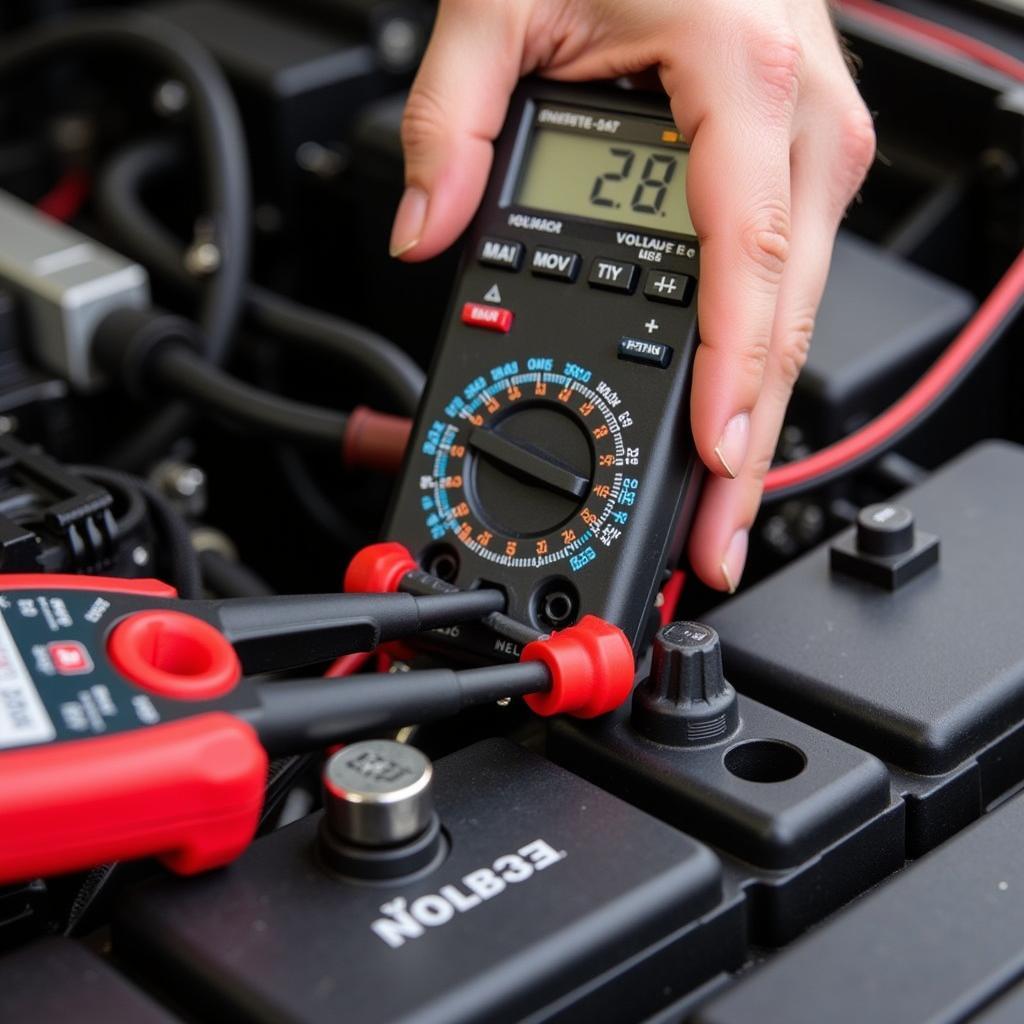A “Tesla Model S low voltage battery warning” can be alarming, but it’s often a solvable issue. This guide provides comprehensive troubleshooting steps and solutions to help you address this warning effectively, whether you’re a DIY enthusiast or prefer professional assistance. tesla battery warning
Understanding the Tesla Model S Low Voltage Battery
The 12V battery in your Tesla Model S powers essential systems like lights, door locks, and the touchscreen. Unlike the main high-voltage battery that propels the car, the 12V battery is more akin to a traditional car battery. A low voltage warning indicates this battery isn’t performing optimally.
Common Causes of the Low Voltage Battery Warning
Several factors can trigger a low voltage battery warning in your Tesla Model S. These include:
- Parasitic Drain: Even when the car is off, certain systems can draw power from the 12V battery, slowly depleting it. This can be due to faulty components or software glitches.
- Age and Degradation: Like all batteries, the 12V battery in your Tesla Model S has a limited lifespan. Over time, its capacity decreases, making it more susceptible to voltage drops.
- Extreme Temperatures: Both extreme heat and cold can negatively impact battery performance, potentially leading to a low voltage warning.
- Software Issues: Occasionally, software bugs can cause inaccurate readings or prevent the battery from charging correctly.
- Faulty Charging System: Issues with the charging system itself can prevent the 12V battery from receiving a proper charge.
Troubleshooting the Low Voltage Battery Warning
Before rushing to a service center, you can try several troubleshooting steps:
- Check for Error Messages: Look for specific error messages on the touchscreen. These can provide valuable clues about the underlying issue.
- Check for Obvious Issues: Inspect the battery terminals for corrosion or loose connections. Ensure the battery cables are securely attached.
- Try a Soft Reset: A soft reset can sometimes resolve software glitches that might be contributing to the problem. To perform a soft reset, hold down both scroll wheels on the steering wheel until the touchscreen goes black.
- Monitor Battery Voltage: Use a voltmeter to check the 12V battery voltage. A healthy battery should read around 12.6 volts when the car is off.
When to Seek Professional Help
If the troubleshooting steps above don’t resolve the issue, it’s best to seek professional help. air bag and seat belt warning light A qualified Tesla technician can diagnose the problem accurately and recommend the appropriate course of action, which might involve replacing the 12V battery, repairing a faulty component, or updating the car’s software.
“A low voltage battery warning shouldn’t be ignored,” says Elon Tusk, a leading expert in electric vehicle diagnostics. “Addressing the issue promptly can prevent further complications and ensure the reliable operation of your Tesla Model S.”
Remote Diagnostics and Software Updates
Modern technology allows for remote diagnostics and software updates, which can sometimes address the low voltage battery warning without requiring a physical visit to a service center. Tesla’s over-the-air updates can often fix software glitches that affect the 12V battery system.
“Remote diagnostics and software updates are a game-changer in the automotive industry,” adds Janet Spark, a senior software engineer specializing in electric vehicle systems. “They allow for faster and more convenient solutions to many common car problems.”
Conclusion
The “tesla model s low voltage battery warning” can indicate a range of issues, from simple parasitic drain to a failing 12V battery. By following the troubleshooting steps and seeking professional assistance when needed, you can effectively address this warning and keep your Tesla Model S running smoothly.
FAQ
-
How long does a Tesla Model S 12V battery last? Typically, a Tesla Model S 12V battery lasts between 3-4 years.
-
Can I jump-start a Tesla Model S with a low 12V battery? While it’s technically possible, it’s not recommended. Jump-starting can damage the car’s sensitive electronics.
-
How much does it cost to replace a Tesla Model S 12V battery? The cost varies depending on location and service provider, but it typically ranges from $200-$300.
-
What should I do if the low voltage battery warning persists after replacing the battery? If the warning persists, there might be a deeper issue, such as a faulty charging system or a parasitic drain. Consult a Tesla technician.
-
Can I drive my Tesla Model S with a low voltage battery warning? You might be able to drive for a short distance, but it’s not recommended. The low voltage can affect various systems, potentially leading to a complete shutdown.
-
Does Tesla offer roadside assistance for low voltage battery issues? Yes, Tesla offers roadside assistance, which can include jump-starting or towing the vehicle to a service center.
-
How can I prevent future low voltage battery warnings? Regularly check your battery voltage, minimize parasitic drain by turning off unnecessary features when the car is parked, and have your battery tested periodically.

